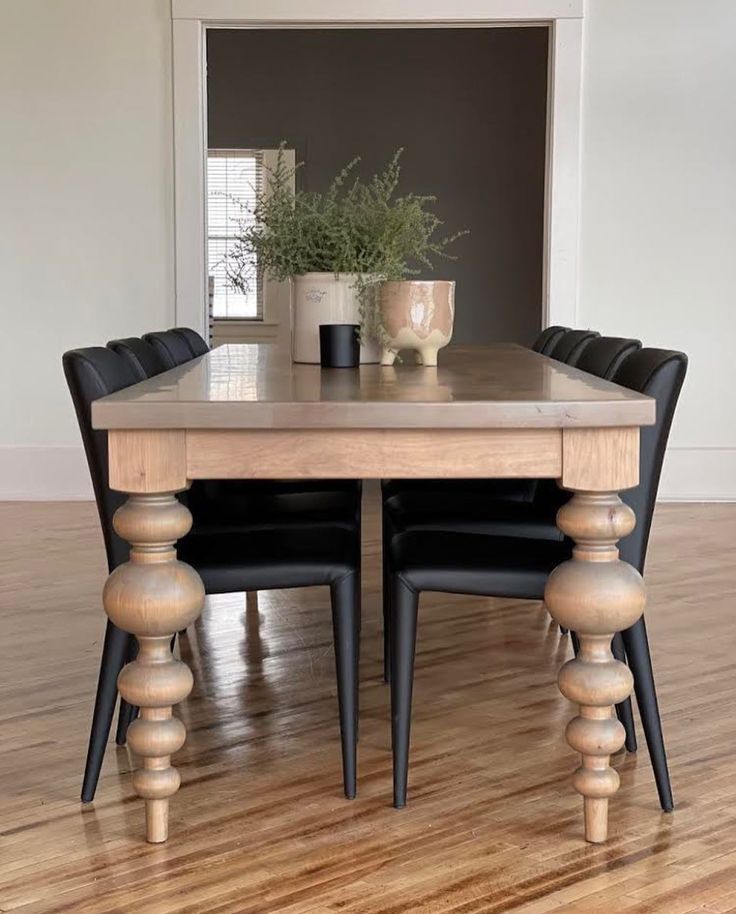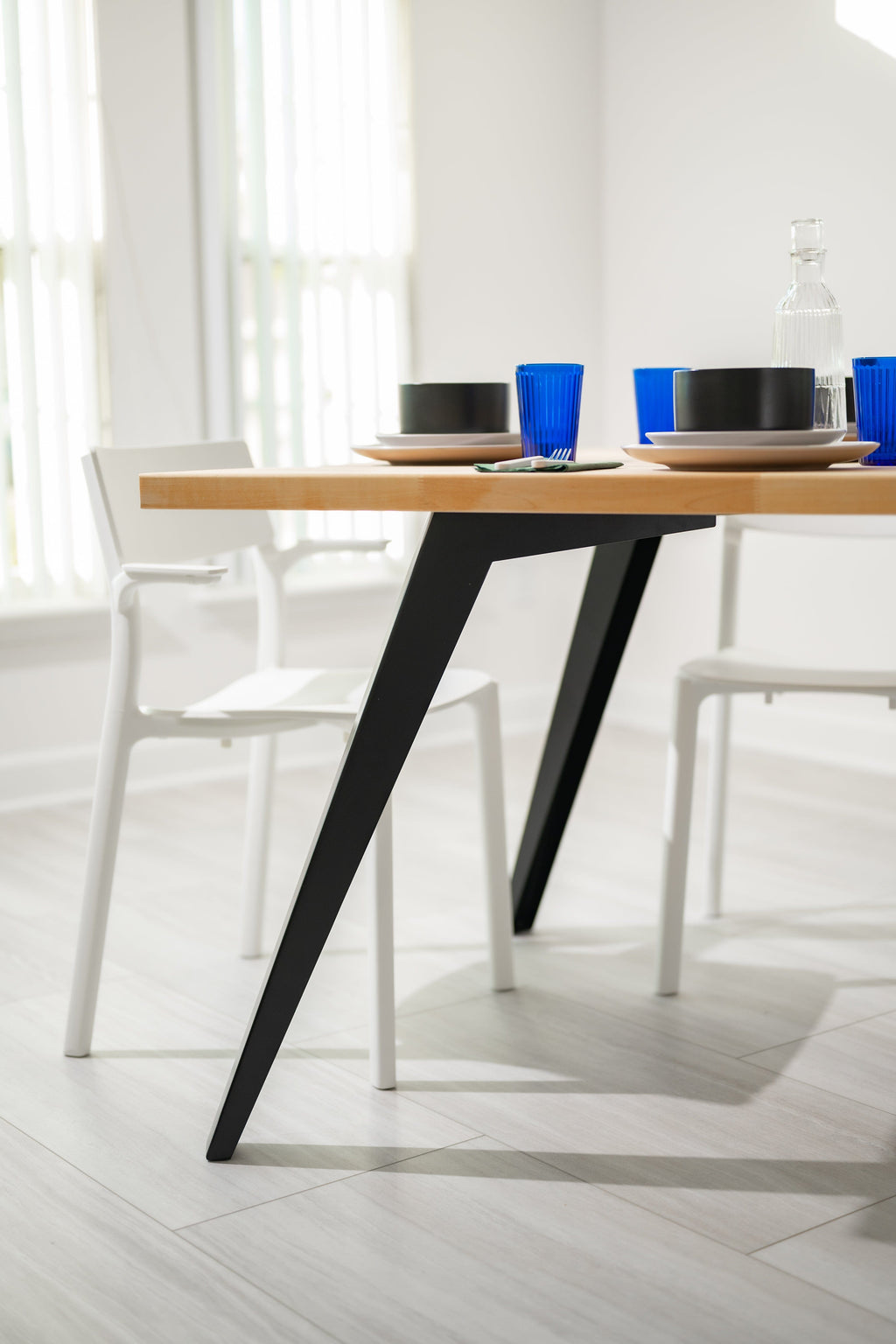The Impact of Dining Room Table Legs on Your Table's Overall Design
The Impact of Dining Room Table Legs on Your Table's Overall Design
Blog Article
From Traditional to Modern: Discover the Suitable Dining-room Table Legs for Your Style
While timeless layouts such as cabriole and transformed legs evoke a feeling of timeless class, modern designs like barrette and geometric alternatives offer an opportunity for striking visual passion. As you consider these aspects, the concern continues to be: just how can you perfectly incorporate these varied leg styles to produce an unified dining experience?
Understanding Table Leg Styles
The range of dining space table leg designs can substantially affect both the visual appeals and performance of the area. Each leg design contributes unique useful attributes and visual elements, accommodating varied design preferences and usage needs. Comprehending these styles is vital for picking the appropriate eating table that lines up with your total interior style vision.
As an example, conical legs provide a tidy, classic appearance that can improve a room's beauty, while stand bases supply stability and optimize legroom, making them optimal for smaller sized rooms. Barrette legs, a characteristic of mid-century modern style, present an industrial style, enabling for a ventilated, open feeling. Trestle legs stimulate rustic charm, offering durable support and a sense of timelessness.
Wood legs can bring warmth and appearance, whereas metal alternatives usually communicate a sleek, modern ambiance. Eventually, recognizing table leg designs is important for producing a natural dining area that mirrors personal design while making certain practicality and comfort.
Conventional Table Leg Options
When selecting dining area table legs, typical choices frequently symbolize ageless elegance and workmanship. These layouts reflect an abundant heritage and a dedication to high quality, making them ideal for those who appreciate traditional aesthetic appeals.
Among one of the most renowned traditional leg styles is the cabriole leg, defined by its stylish bent form. This layout typically features decorative makings and is most typically found in Queen Anne and Chippendale furniture. An additional preferred alternative is the transformed leg, which flaunts a series of smooth, rounded shapes that offer a timeless appearance while preserving security.
Additionally, the straight leg, while simple, supplies a basic and tough structure that can mix seamlessly with a variety of tabletop styles. For those attracted to ornate detailing, claw-and-ball feet legs evoke a feeling of magnificence and can offer as a stunning prime focus in any dining space.
Last but not least, stand bases, although not strictly legs, supply an alternate conventional alternative that enables for enough legroom and can be perfectly carved. Each of these conventional leg styles adds to the total ambiance of a dining-room, weding feature with visual appeal.

Modern Table Leg Styles
Modern table leg layouts use a diverse variety of styles that highlight tidy lines and innovative materials. These layouts often prioritize performance while working as striking prime focus within a dining area. Minimalist aesthetic appeals are widespread, with legs site here crafted from products such as steel, glass, and engineered wood, which add to a ventilated and modern feeling.
One popular layout is the barrette leg, characterized by its slender, conical framework that offers security without frustrating the tabletop (dining room table legs). This style is often located in mid-century modern-day furniture and can easily enhance different dining table shapes. Another fad is the use of geometric shapes, where legs may take on unbalanced or angular kinds, including visual interest and a touch of creativity

Mixing Styles for Special Rooms
Frequently, house owners seek to develop distinct dining rooms that mirror their personal style by blending numerous style components. This strategy enables for the incorporation of diverse looks, resulting in a harmonious yet unique environment. Pairing a rustic wood table with sleek, modern-day metal legs can create an eye-catching comparison that boosts the area's total charm.
Additionally, integrating vintage table legs with contemporary tabletops can evoke a feeling of background while preserving a why not try here contemporary perceptiveness. Such mixes not just showcase specific taste but additionally urge creative thinking, permitting homeowners to curate an area that feels both individual and welcoming.
Color plays a vital role in this blending process; choosing table legs that enhance or comparison with the existing color design can enhance visual interest. For instance, whitewashed legs can soften the boldness of a dark table surface area, developing a balanced aesthetic.
Tips for Selecting the Right Legs
Selecting the right table legs is essential for achieving both capability and visual allure in your eating area. Begin by taking into consideration the general style of your room. Conventional settings benefit from legs that include intricate carvings or transformed designs, while modern rooms might require smooth, minimalist designs.
Following, assess the height and stability of the legs. dining room table legs. Common eating tables range between 28 to 30 inches in height, so ensure the legs match this dimension for comfort. Furthermore, robust materials, such as hardwood or metal, can enhance security and longevity
Assess the leg shape as well-- alternatives consist of right, dining room table legs tapered, or stand layouts. Straight legs provide a traditional look, while tapered legs can include a touch of style. Pedestal bases provide enough legroom and are ideal for smaller sized rooms.
Verdict
In summary, picking the excellent eating area table legs needs mindful factor to consider of both contemporary and traditional designs. Typical choices such as cabriole and transformed legs supply ageless sophistication, while modern-day designs like barrette and geometric shapes provide a contemporary touch. By harmonizing leg design, elevation, and product with the total decoration, a cohesive and welcoming ambience can be achieved. Inevitably, the chosen table legs need to show the preferred visual, improving the dining experience within the room.
The selection of dining area table leg designs can significantly affect both the aesthetics and capability of the area. Eventually, understanding table leg styles is necessary for creating a cohesive eating location that reflects personal design while ensuring practicality and convenience.One of the most famous conventional leg designs is the cabriole leg, identified by its stylish bent shape. Straight legs supply a traditional appearance, while conical legs can add a touch of sophistication.In recap, picking the ideal eating space table legs needs cautious factor to consider of both modern and standard designs.
Report this page